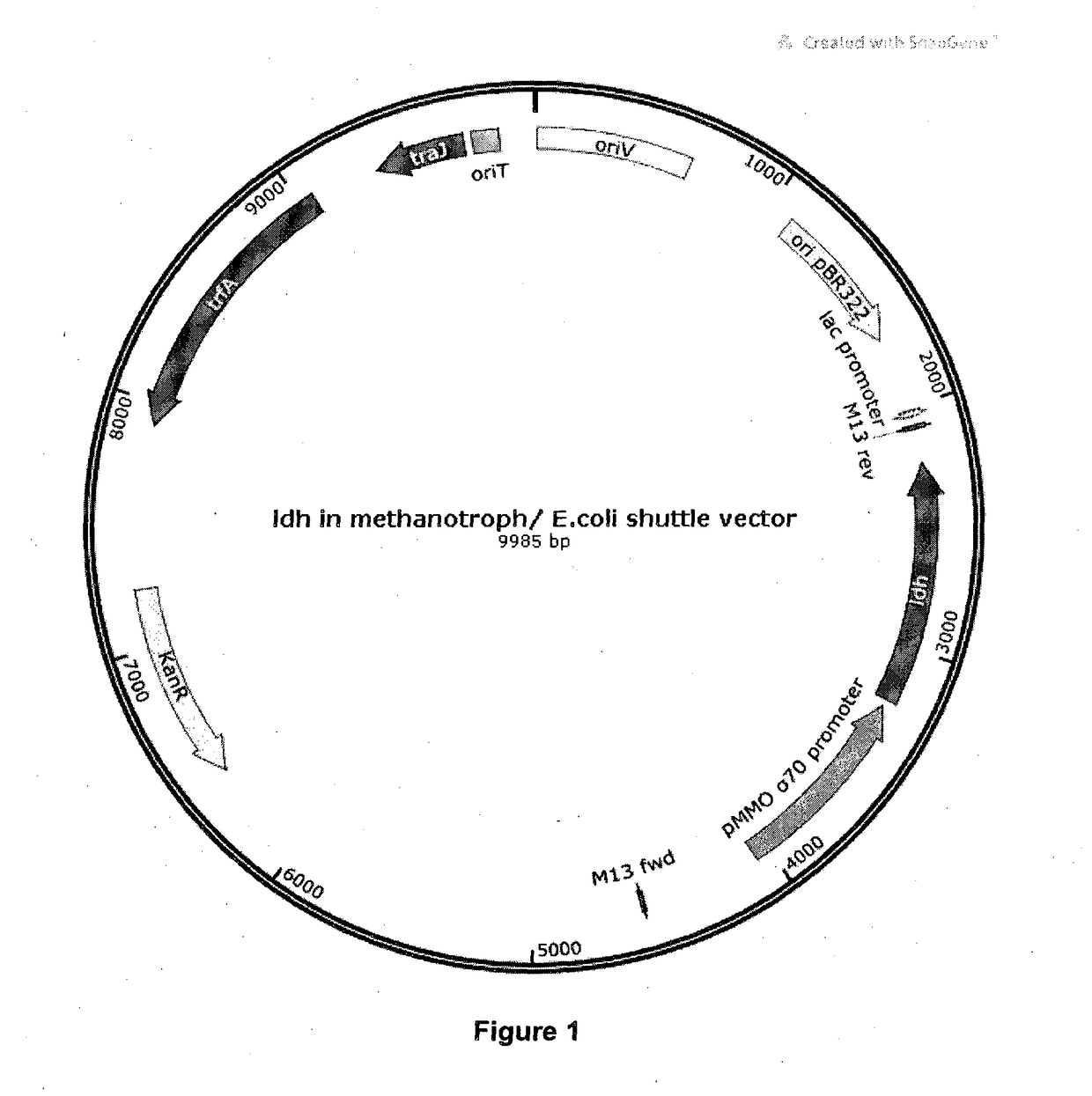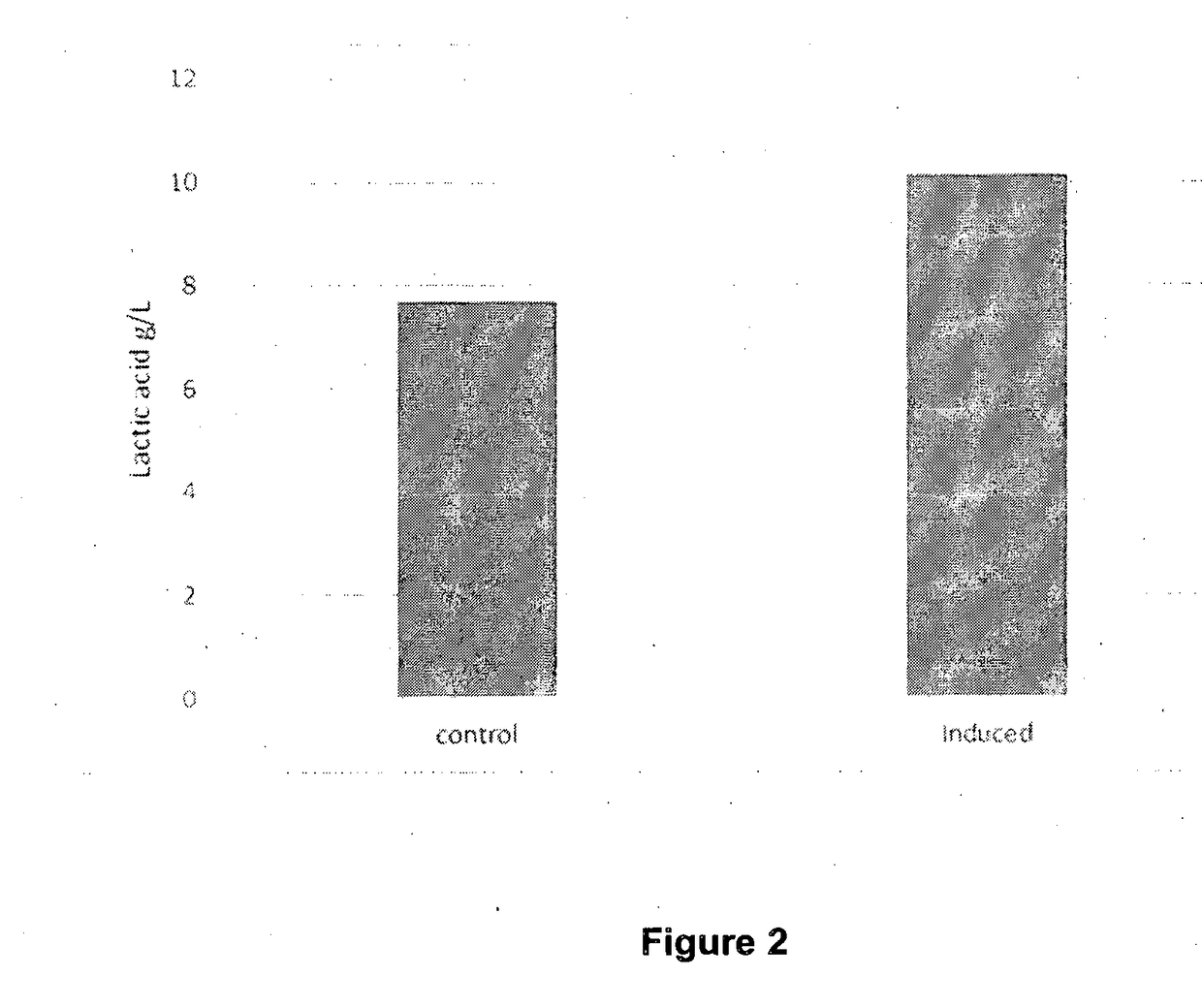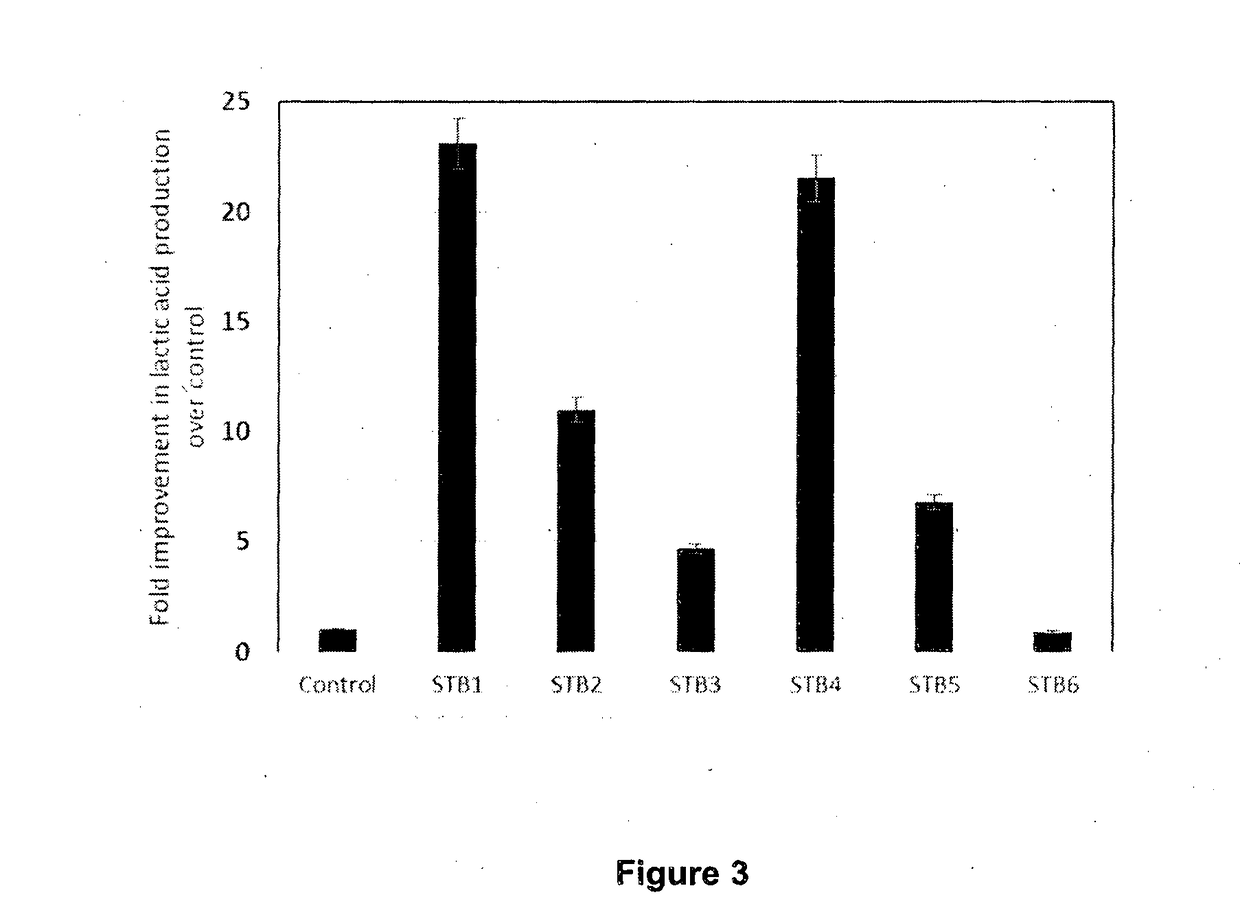Production of lactic acid from organic waste or biogas or methane using recombinant methanotrophic bacteria
- Summary
- Abstract
- Description
- Claims
- Application Information
AI Technical Summary
Benefits of technology
Problems solved by technology
Method used
Image
Examples
example 1
actate Dehydrogenase into a Bacterial Vector
[0091]Lactate dehydrogenase gene (Genbank U36928.1; P52643; SEQ ID No. 1) from E. coli was amplified from genomic DNA using primers flanked with BamH1 and HindIII restriction enzymes. The amplified gene was restriction digested and cloned into BamHI and HindIII sites in the pET21a (Novagen Cat No: 69740-3CN) vector to create pSB101. The gene was then sequence verified.
[0092]The cloned gene was re-amplified with primers with Sac1 and SphI overhangs. The amplified gene was restriction digested with SacI and SphI and cloned into the SacI / SpHI sites in the broad host range vector pMHA201 (From Prof. Colin Murrell, University of Norwich), downstream of sigma 70 promoter, to create pSB102. pMHA201 (Alit, H., & Murrell, J. C., Development and validation of promoter-probe vectors for the study of methane monooxygenase gene expression in Methylococcus capsulatus Bath., Microbiology, 155(3), pp 761-771(2009); doi:10.1099 / mic.0.021816-0) is a plasmid...
example 2
ion of Activity of Lactate Dehydrogenase
[0093]Vector pSB101 was transformed into E. coli. BL21 competent cells (NEB, Cat. Num: 2530H) by chemical transformation. True transformants were selected by plating cells on LB agar plates containing 50 ug / ml of kanamycin.
[0094]Single colonies of the true transformants were used to inoculate 5 ml of LB media containing 50 ug / ml of kanamycin in 50 ml culture tubes. The cultures were incubated for a duration of 16 hours at 37° C. at 200 rpm. The cultures were used to inoculate 25 ml LB media containing 50 ug / ml of kanamycin in 100 ml flasks at a ratio of 1:1000. The cultures were incubated at 37° C. at 200 rpm. The culture was induced with 0.1 mM IPTG at an OD of 0.8. Samples were taken from the flasks at different time intervals (upto 24 hours) for lactic acid analysis. The samples were centrifuged at 10,000 rpm for 20 mins to separate the cells from the supernatant. The supernatant was analyzed for lactic acid levels.
[0095]Lactic acid was est...
example 3
on of pSB102 into Methanotroph Strains
[0096]Methanotroph strains were cultivated in nitrate mineral salt (NMS) medium. NMS medium was prepared following the protocol outlined at http: / / www.methanotroph.org / wiki / culturing-tips and included here. NMS agar plates were prepared with 1.5% (w / v) Bacto agar. Antibiotics were added as required: Kanamycin (30 μg / ml) and Gentamicin (5 μg / ml).
[0097]Methanotrophs were typically grown in 250 ml conical flasks with 24 / 29 joint containing 50 ml NMS medium. Flasks were sealed with suba-seals (Sigma Aldrich, Cat Num: Z279773-10EA) and gassed with 50 ml (i.e. ˜20%) methane / carbon dioxide (95 / 5, v / v mix). M. capsulatus (From Prof. Colin Murrell, University of Norwich) derived strains were incubated at 45° C. with shaking at 200 rpm. M. trichosporium (From Prof. Colin Murrell, University of Norwich) derived strains were incubated at 30° C. A typical methanotrophic culture took about 4-6 days to reach stationary phase. Methanotrophs grown on NMS agar pl...
PUM
| Property | Measurement | Unit |
|---|---|---|
| Temperature | aaaaa | aaaaa |
| Temperature | aaaaa | aaaaa |
| Temperature | aaaaa | aaaaa |
Abstract
Description
Claims
Application Information
 Login to View More
Login to View More - R&D
- Intellectual Property
- Life Sciences
- Materials
- Tech Scout
- Unparalleled Data Quality
- Higher Quality Content
- 60% Fewer Hallucinations
Browse by: Latest US Patents, China's latest patents, Technical Efficacy Thesaurus, Application Domain, Technology Topic, Popular Technical Reports.
© 2025 PatSnap. All rights reserved.Legal|Privacy policy|Modern Slavery Act Transparency Statement|Sitemap|About US| Contact US: help@patsnap.com



